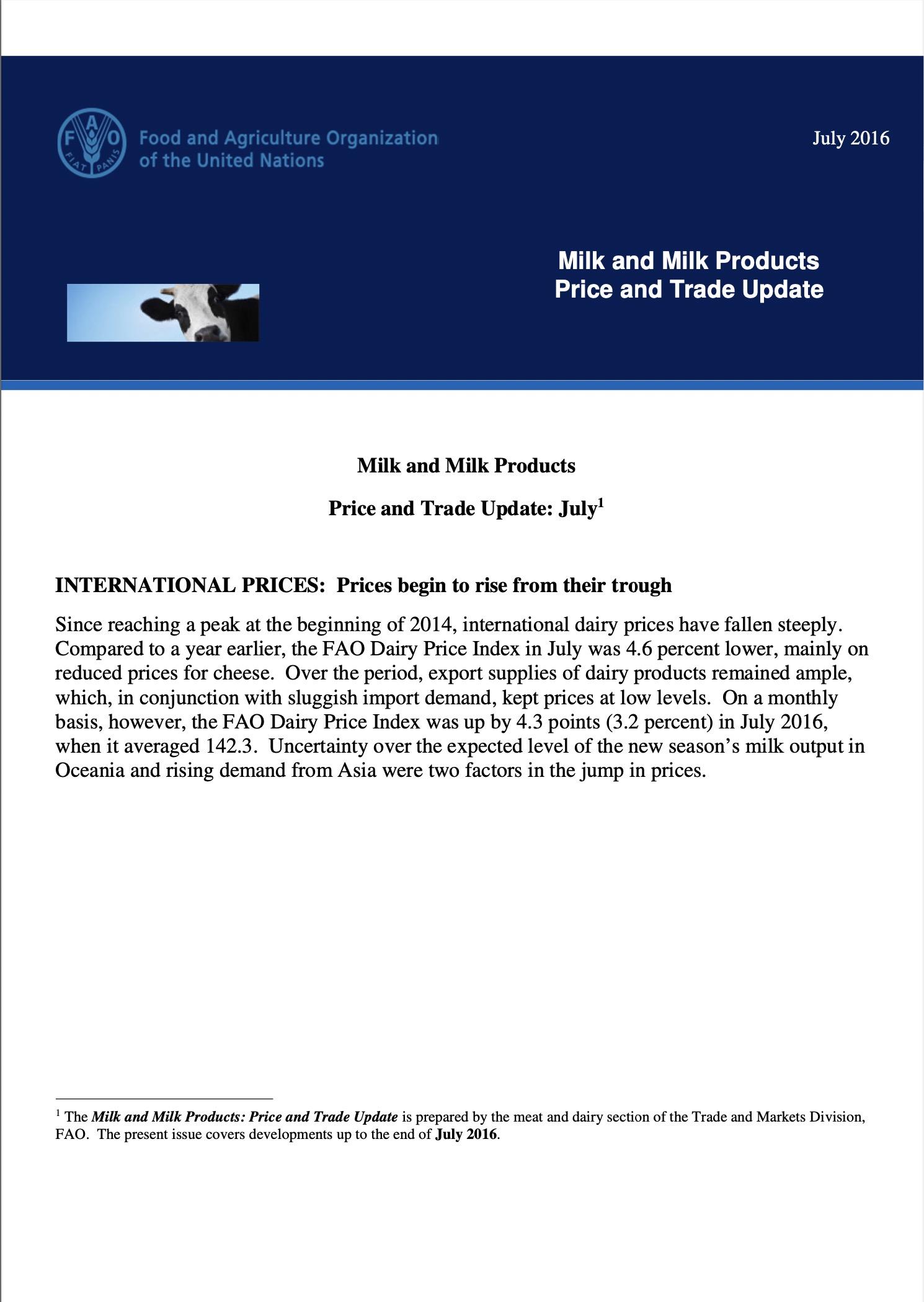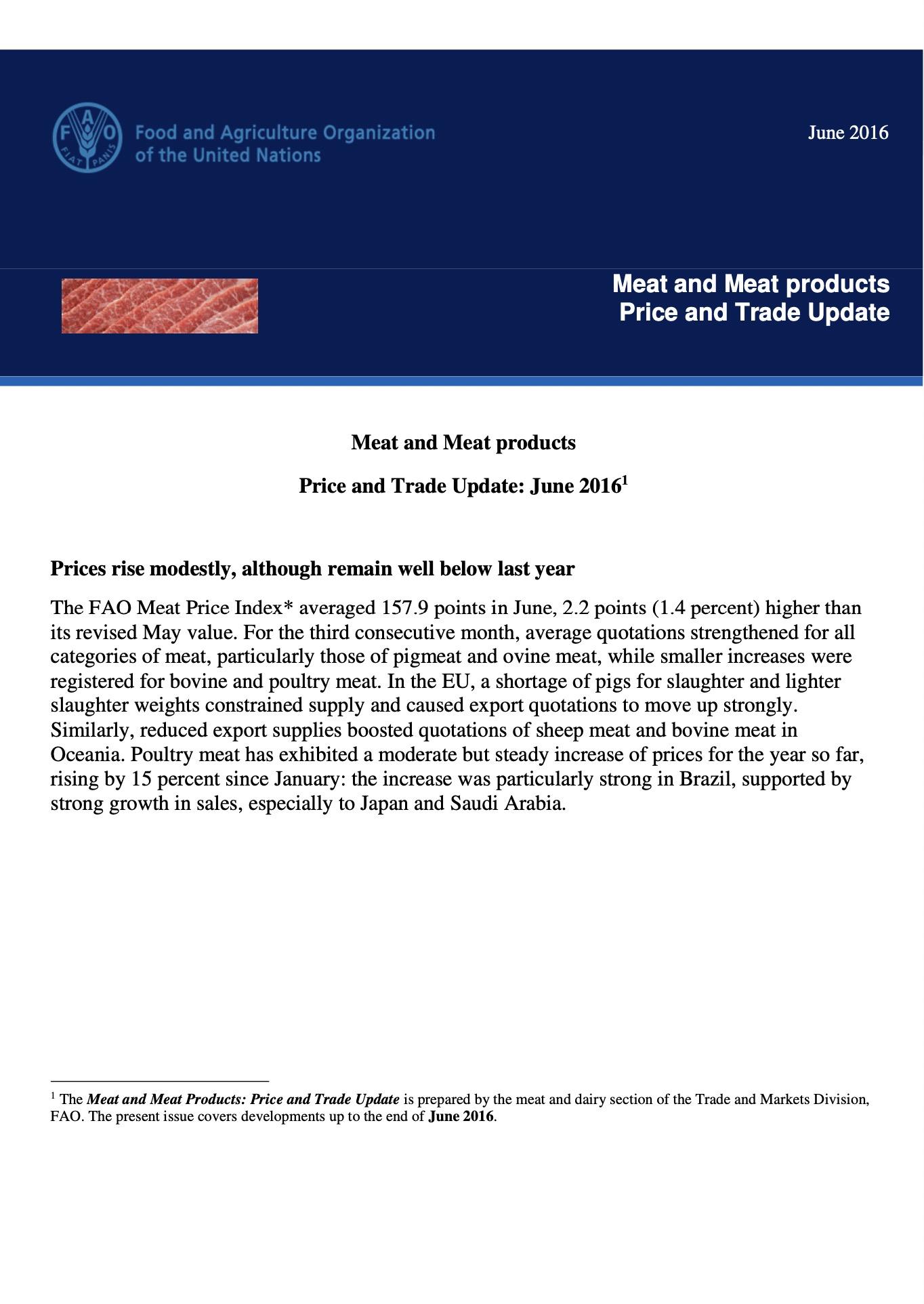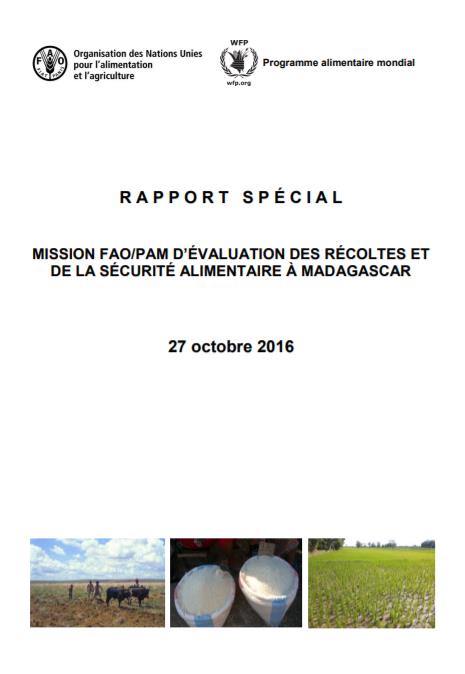
Rapport Spécial - Mission FAO/PAM d'évaluation dex récoltes et de la sécurité alimentaire à Madagascar
27/10/2016
La Mission conjointe FAO/PAM d’évaluation des récoltes et de la sécurité alimentaire (CFSAM) s’est rendue en Madagascar du 18 juillet au 20 août 2016. La Mission avait pour mandat de s’enquérir du déroulement de la campagne, de recenser et d’évaluer les facteurs ayant eu une incidence sur la campagne agricole 2015/16, d’établir une estimation de la production des denrées alimentaires de base et d’évaluer la situation globale de la sécurité alimentaire et nutritionnelle nationale.
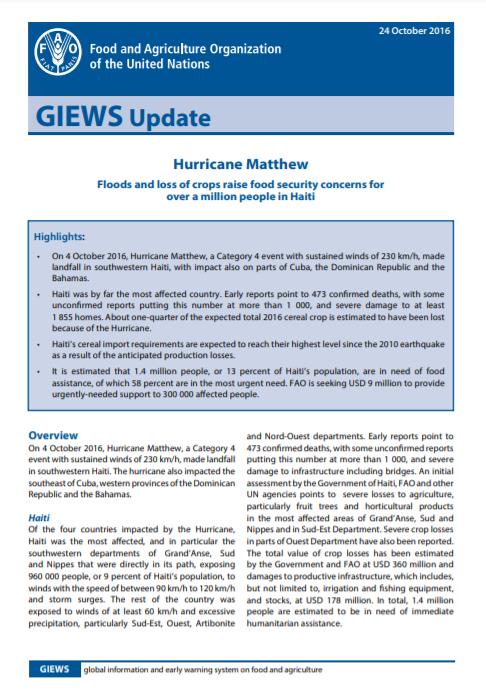
GIEWS Update - Hurricane Matthew, 24 October 2016
24/10/2016
On 4 October 2016, Hurricane Matthew, a Category 4 event with sustained winds of 230 km/h, made landfall in southwestern Haiti, with impact also on parts of Cuba, the Dominican Republic and the Bahamas. Haiti was by far the most affected country. Early reports point to 473 confirmed deaths, with some unconfirmed reports putting this number at more than 1 000, and severe damage to at least 1 855 homes.
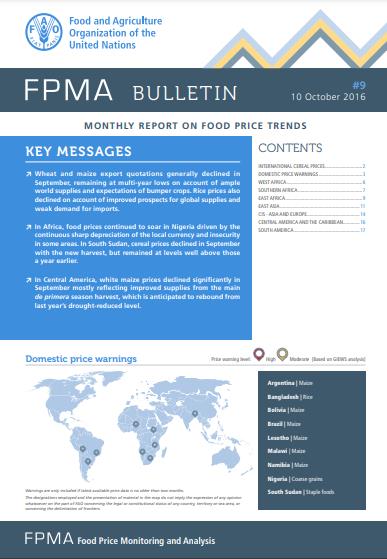
Food Price Monitoring and Analysis (FPMA) Bulletin #9, 10 October 2016
10/10/2016
Wheat and maize export quotations generally declined in September, remaining at multi-year lows on account of ample world supplies and expectations of bumper crops. Rice prices also declined on account of improved prospects for global supplies and weak demand for imports. In Africa, food prices continued to soar in Nigeria driven by the continuous sharp depreciation of the local currency and insecurity in some areas. In South Sudan, cereal prices declined in September with the new harvest, but remained at levels well above those a year earlier. In Central America, white maize prices declined significantly in September mostly reflecting improved supplies from the main de primera season harvest, which is anticipated to rebound from last year’s drought-reduced level.
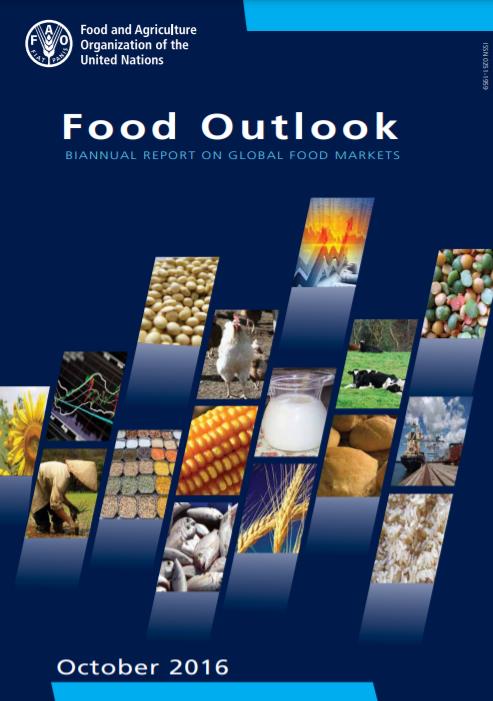
Food Outlook - October 2016
03/10/2016
From a global perspective, food markets are expected to remain generally well balanced in 2016/17 amid large export availabilities and relatively low and more stable international prices, especially for cereals. The world food import bill is set to dip to a six-year low, while still remaining above the USD 1 trillion mark.
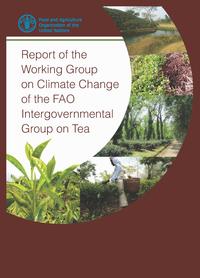
Report of the Working Group on Climate Change of the FAO Intergovernmental Group on Tea
13/09/2016
Tea is the most used beverage second to water in the world. Presently, the climate change triggered by global warming is posing a major threat to the resilience of agricultural systems including tea cultivation. Increasing temperatures, changes to rainfall amount and distribution, coupled with major shifts in other meteorological parameters in comparison with long term observations have further complicated the production process. This compilation of adaptation strategies for tea cultivation deve loped and practiced by major tea growing countries of the world, is the first step taken by the working group on climate change of the FAO-IGG on tea to minimize climate change impacts on tea plantations. It is a joint effort by the scientists of Tea Research Institute of India, Sri Lanka, Kenya and China supported by the FAO-IGG on tea in Rome. This documentation is mainly targeted at tea planting community, policy makers and other users such as researchers, national and international research institutes and multilateral organizations dealing with sustainable tea cultivation, development and livelihood security of dependents.
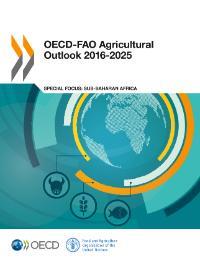
OECD-FAO Agricultural Outlook 2016-2025
13/09/2016
The twelfth joint edition of the OECD-FAO Agricultural Outlook provides market projections to 2025 for major agricultural commodities, biofuels and fish. The 2016 report contains a special feature on the prospects for, and challenges facing, Sub-Saharan Africa. Over the ten year Outlook period slowing demand growth will be matched by efficiency gains in production, implying relatively flat real agricultural prices. However, market and policy uncertainties imply a risk of resurgent volatility. The outlook for agriculture in Sub-Saharan Africa is for rising food availability, which will support a declining incidence of undernourishment. The sector’s prospects could be much improved by more stable policies across the region, by strategic public and private investments, notably in infrastructure, and by suitably adapted research and extension.
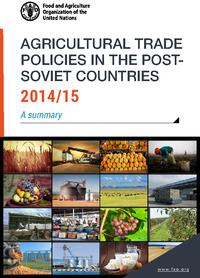
Agricultural trade policies in the post-soviet countries 2014/15
13/09/2016
The document is based on the publication “Review of Agricultural Trade Policies in post-Soviet countries 2014-15”. In the 2013-2014 period, most countries in the region registered a negative foreign trade balance in agrifood products (HS codes 1-24). The largest deficit in this product category was recorded in the Russian Federation, which had an average annual deficit over the two years of USD 23.9 billion.
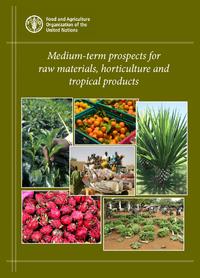
Medium-term prospects for RAMHOT products
13/09/2016
FAO often undertakes projections of production, demand, and trade for all major agricultural commodities as a basis for medium-term commodity analysis. These projections are an important input for FAO’s commodity outlook work, for global perspective studies and as background for policy consultations on individual commodities. Outside FAO, these projections are used by national planning agencies, international research institutions and other national and international organizations requiring a ba se reference for strategies in national agricultural commodity planning and investment. This particular publication puts the focus on a set of selected Raw materials, Horticulture and Tropical (RAMHOT) Products, namely sugar, tea, banana, tropical fruits, citrus products, Jute, and hard fibres. A medium-term outlook is generated for each of these products, and an analysis is undertaken to assess underlying market drivers and the factors likely to shape market performance over the next 10 years.
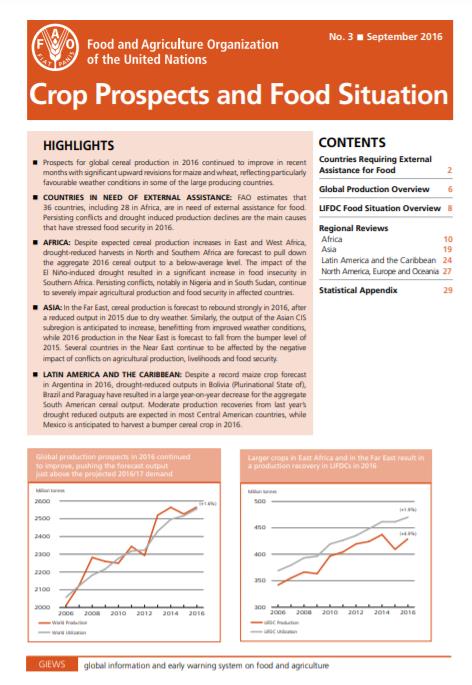
Crop Prospects and Food Situation - Quarterly Global Report, No. 3, September 2016
09/09/2016
Prospects for global cereal production in 2016 continued to improve in recent months with significant upward revisions for maize and wheat, reflecting particularly favourable weather conditions in some of the large producing countries.
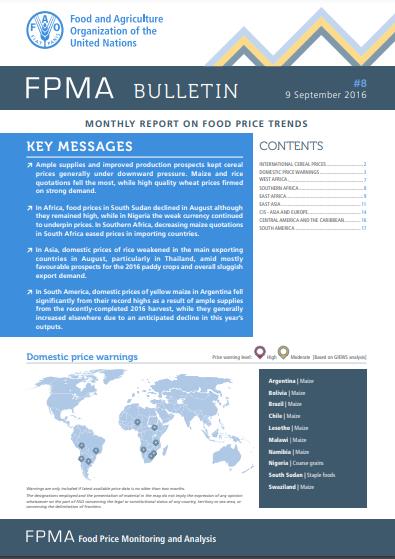
Food Price Monitoring and Analysis (FPMA) Bulletin #8, 9 September 2016
09/09/2016
Ample supplies and improved production prospects kept cereal prices generally under downward pressure. Maize and rice quotations fell the most, while high quality wheat prices firmed on strong demand. In Africa, food prices in South Sudan declined in August although they remained high, while in Nigeria the weak currency continued to underpin prices. In Southern Africa, decreasing maize quotations in South Africa eased prices in importing countries. In Asia, domestic prices of rice weakened in the main exporting countries in August, particularly in Thailand, amid mostly favourable prospects for the 2016 paddy crops and overall sluggish export demand. In South America, domestic prices of yellow maize in Argentina fell significantly from their record highs as a result of ample supplies from the recently-completed 2016 harvest, while they generally increased elsewhere due to an anticipated decline in this year’s outputs.
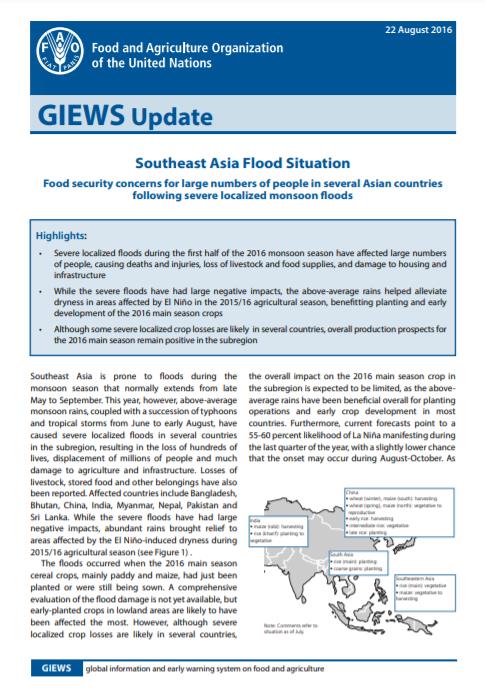
GIEWS Update - Southeast Asia Flood Situation, 22 August 2016
22/08/2016
Severe localized floods during the first half of the 2016 monsoon season have affected large numbers of people, causing deaths and injuries, loss of livestock and food supplies, and damage to housing and infrastructure. While the severe floods have had large negative impacts, the above-average rains helped alleviate dryness in areas affected by El Niño in the 2015/16 agricultural season, benefitting planting and early development of the 2016 main season crops. Although some severe localized crop losses are likely in several countries, overall production prospects for the 2016 main season remain positive in the subregion.
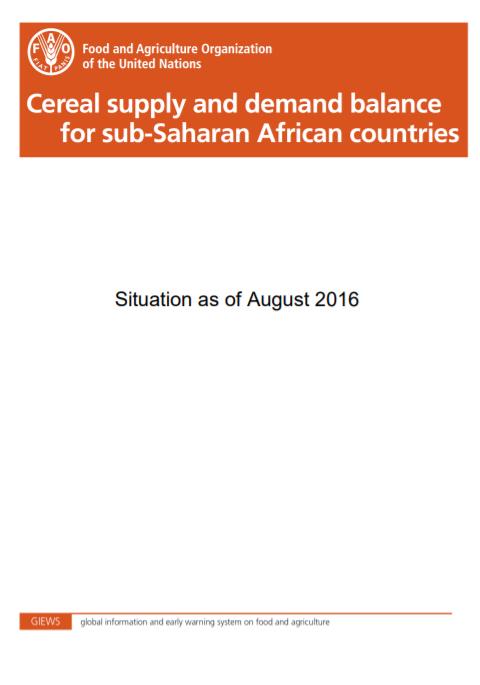
Cereal supply and demand balances for sub-Saharan African countries No.3, September 2016
11/08/2016
Statistical report presenting cereal supply and demand balance for current year in sub-Saharan African countries. This report is based on information available as of August 2016.
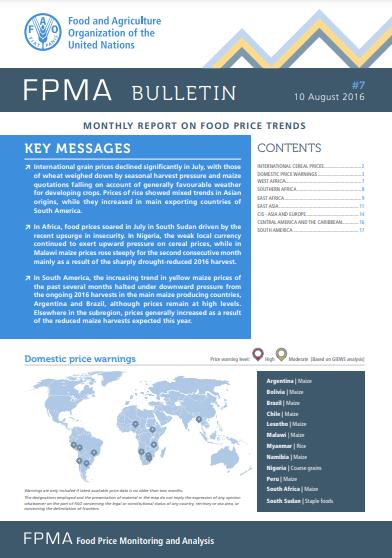
Food Price Monitoring and Analysis (FPMA) Bulletin #7, 10 August 2016
10/08/2016
International grain prices declined significantly in July, with those of wheat weighed down by seasonal harvest pressure and maize quotations falling on account of generally favourable weather for developing crops. Prices of rice showed mixed trends in Asian origins, while they increased in main exporting countries of South America. In Africa, food prices soared in July in South Sudan driven by the recent upsurge in insecurity. In Nigeria, the weak local currency continued to exert upward pressure on cereal prices, while in Malawi maize prices rose steeply for the second consecutive month mainly as a result of the sharply drought-reduced 2016 harvest. In South America, the increasing trend in yellow maize prices of the past several months halted under downward pressure from the ongoing 2016 harvests in the main maize producing countries, Argentina and Brazil, although prices remain at high levels. Elsewhere in the subregion, prices generally increased as a result of the reduced maize harvests expected this year.
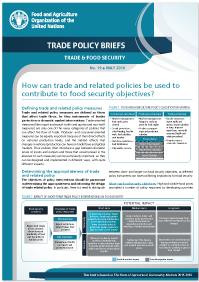
No. 19 How can trade and related policies be used to contribute to food security objectives?
09/08/2016
This policy brief provides an overview of the different food security objectives that underlie the use of trade and related policy measures, based on Chapter 3 of the State of Commodity Markets (SOCO) 2016.

No. 18 How is agricultural trade evolving and what are the food security implications?
13/07/2016
This policy brief provides an overview of the trends in agricultural trade, and the implications for food security, based on Chapter 1 of the State of Commodity Markets (SOCO) 2016.

No. 17 - How does agricultural trade impact food security?
13/07/2016
This brief is in continuation of the "Trade Policy Briefs" (link: http://www.fao.org/economic/est/publications/trade-policy-briefs/en/ ) of which the last issue was No.16.
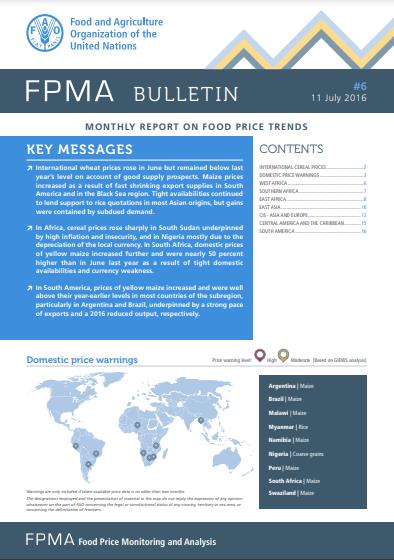
Food Price Monitoring and Analysis (FPMA) Bulletin #6, 11 July 2016
11/07/2016
International wheat prices rose in June but remained below last year’s level on account of good supply prospects. Maize prices increased as a result of fast shrinking export supplies in South America and in the Black Sea region. Tight availabilities continued to lend support to rice quotations in most Asian origins, but gains were contained by subdued demand. In Africa, cereal prices rose sharply in South Sudan underpinned by high inflation and insecurity, and in Nigeria mostly due to the depreciation of the local currency. In South Africa, domestic prices of yellow maize increased further and were nearly 50 percent higher than in June last year as a result of tight domestic availabilities and currency weakness. In South America, prices of yellow maize increased and were well above their year-earlier levels in most countries of the subregion, particularly in Argentina and Brazil, underpinned by a strong pace of exports and a 2016 reduced output, respectively.
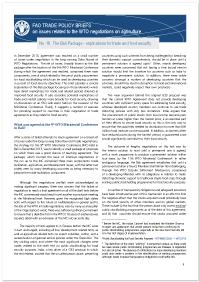
No. 16 The Bali Package - implications for trade and food security
14/06/2016
In December 2013, agreement was reached on a small number of issues under negotiation in the long-running Doha Round of WTO Negotiations. The set of issues, broadly known as the Bali package after the location of the 9th WTO Ministerial Conference during which the agreement was reached, comprised three main components, one of which related to the use of public procurement for food stockholding which can be used by developing countries in pursuit of food security objectives.

